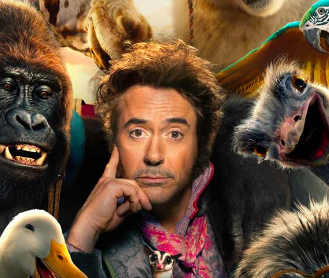The People’s Joker feels as if it comes from the nichiest corners: an autobiographical mixed media art piece, based on the filmmaker’s own trans coming-of-age, that reclaims pop culture as a way to personally convey and connect the past to the present. But as specific as The People’s Joker may sound on paper and as polarizing as it appears on screen, this wickedly transgressive tragicomedy is one of the most accessible films ever contributed to cinema’s queer canon.
Director/co-writer Vera Drew plays Joker the Harlequin, an aspiring comedian who looks up to esteemed jokers they watch on TV (including former Tim & Eric Awesome Show, Great Job! puppeteer David Liebe Hart, who is brilliantly cast). As someone who had a hard time as a kid (Griffin Kramer) with their own identity, living in Smallville with their single mother (Lynn Downey), teenage Joker moves to Gotham City with big dreams to find their own breakout. The breakout is delayed after a disappointing audition for a sketch comedy sitcom, but Joker finds encouragement from another misfit, The Penguin (Nathan Faustyn), and together they create they’re own lair…erm…safe haven – an alt-comedy bar. Joker also finds romance with Mr. J (Kane Distler), another joker on the fringe. The film also features fun voice cameos by comedians Bob Odenkirk (Mr. Show with Bob and David, Nobody), Maria Bamford (Netflix’s Lady Dynamite), Tim Heidecker (Mister America), and Phil Braun (a frequent guest on Heidecker’s Office Hours podcast).
Todd Phillips’ Oscar-winning reimagining of the DC universe, Joker, was used as inspiration for The People’s Joker. While snooty cinephiles took aim at the problematic nature of Joker, I genuinely believe Vera Drew was motivated by it aside from her own experiences. As someone who thought Joker was a cultural tour de force, it seems as though Drew realized how Phillips interpreted how society perceives mental illness, repurposed the angle, and “made it their own”. Let me be clear: there is not, nor should there ever be, a connection made between mental illness and being transgendered. But rather, Drew identifies with the confused looks of others and the psychological isolation that followed. Earlier scenes between Kramer and Downey rip your heart out, as mom resorts to “therapy” for her child from Dr. Jonathan Crane (aka. Scarecrow). The solution: being fed a substance that will set the kid “back on track”, along with a lifelong prescription for an inhaler that will guarantee self-happiness. It’s important to note that Joker’s deadname is “censored”, until someone uses it with the intention to hurt and gain power.
Drew throttles between different styles to convey various stages of coping while, as a filmmaker, showing how a personal narrative doesn’t have to fit a constructed form. The styles are given the task to also match the film’s offbeat humour, which they do quite well. But despite how vibrantly wild the movie looks, emotional subtext lines every animation and chromakey effect that gives the film, and much like Vera Drew, an unforgettable sense of individuality.
**********
Do You Tweet? Follow These Tweeple:
Addison Wylie: @AddisonWylie





Be the first to comment